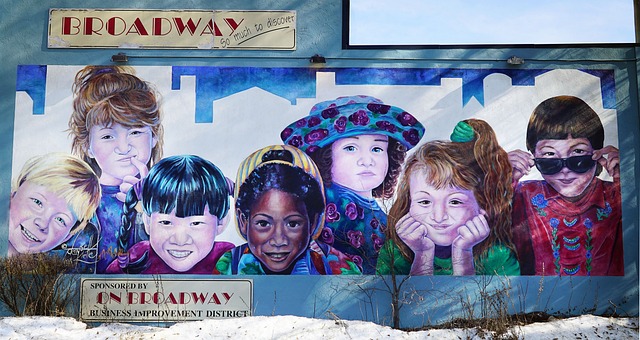Recent interest in multilingualism research does not mean that it is an unusual or a recent phenomenon. In fact, it has been investigated decades ago but was perceived mostly as problematic, and detrimental for the individual (see Jessner, 2008 for an overview). Nevertheless, multilingualism has been and continues to be the social reality or the norm for many people in most parts of the world, such as (Asia, Africa, and some parts of Europe) (Franceschini, 2011; Stavans& Muchnik, 2007; Szubko-Sitarek, 2015). Although a concrete estimation has never been revealed, many scholars support the claim that in terms of quantity, multilingual outnumbered monolinguals across the globe (see Auer, 2007; Shin, 2013).
Trade, commerce, and businesses between people and nations facilitate language contact leading in most cases to bi-multilingualism Grosjean (2010). According to Franceschini (2011), the phenomenon practices existed and were necessary for cultural transfer and the development of trade. However, linguistic theories developed during the 19th and 20th centuries have preferred to ignore them. Studies on monolingualism over multilingualism were privileged in order to prevail language unity under the motto of the moment “one nation-one language” (Auer, 2007; King, Fogle & Logan-Terry, 2008). In the same vein, Romaine (1985) maintains that it is not by accident that these theories were developed originally in Western Europe. She goes on to suggest that “at various stages in their history most of these nations have felt that minority groups were threats to the cohesion of the state and have therefore tried to eradicate both the speakers and their language.” (p. 6)
Table of Contents
Becoming Multilingual
People become multilingual broadly in two different ways, either simultaneously (starting from birth) or sequentially (later in life) (Lanza, 2007). However, to count as simultaneous acquisition, some scholars infer the age factor based on how early the individual has been exposed to the languages. For some, language exposure must begin at birth or at least before the child’s third birthday (Paradis, 2007). However, Grosjean (2010) highlights that there is no consensus among linguists concerning the age factor that separates the two types of acquisition. While others would agree from birth to four, children are in a simultaneous mode, but in a successive mode when they reach age five and up.
Different categorizations have been assigned to label the type of multilingualism. Szubko-Sitarek (2015) distinguish for instance natural multilingualism (citizen of bi-multilingual countries, children from mixed couples, and immigrants) versus formal multilingualism (natural bilinguals learning a foreign language in school context, and learners exposed to one or more foreign languages, especially in school context). Additionally, Olshtain and Nissim-Amitai (2004) distinguish natural multilingualism (children born in multilingual contexts) and transition multilingualism (such as immigrants). Finally, in Valdés and Figueroa’s study (see Pittman, 2008) the authors distinguish, elective multilingualism (people who learn the language by choice) and circumstantial multilingualism (people who have the necessity to learn the language in order to function in the community). Implicitly, these classifications also portray how society perceives the individual, and the individual himself as a multilingual.
Research on Multilingualism
Usually, research in the field has been approached from two different perspectives, namely, social and cultural (sociolinguistics) and individual and mentalist (psycholinguistics). From the sociolinguistic view which sees language embedded in social interactions, people including children will become multilingual if they are raised in multilingual families and/or communities. In psycholinguistics research, the focus is more on paralleling phonological, lexical, and morphosyntactic acquisition of multilingual compared to monolinguals (Szubko-Sitarek, 2015). Unfortunately, this is an imbalanced comparison since multilingual differ from monolinguals in many ways. In fact, multilingual children have to acquire two or more linguistic systems in the same amount of time that their monolingual counterparts are simply acquiring one (Paradis, 2007).
Romaine (1985) relates both views and suggests that bilingualism, or indirectly multilingualism, “exists within cognitive systems of individuals, as well in as families and communities” (p. 8). This argument contradicts Aronin and Ó Laoire (2004), who think that it is necessary to base the study of multilingualism on the notion of identity as they argued:
We suggest a new approach to multilingualism, viewing it and singling it out as a category of study in itself within the scope of disciplines related to language and society that have a foundation in identity theory (p.12).
I support the idea that both views complement each other. Both views embrace a larger aspect of the concept for a broader understanding.
Multilingualism versus Multilinguality
It is also important to point out here the difference between the terms multilingualism and multilinguality established byAronin and Ó Laoire (2004). For them, multilingualism refers to the situation, the process while multilinguality denotes the “inner constructs of a single speaker” (Aronin& Ó Laoire, 2004, p. 16). Therefore, ‘multilinguality’ or ‘linguistic identity’, is the intrinsic characteristic of the multilingual. However, as they continued to argue, multilinguality, comparatively to ‘individual trilingualism,’is not strictly language-related, but intertwined with many, if not all the aspects of identity which makes multilinguality unique in each individual (ibid).
Finally, the main question raised by researchers in the field (see Stavans& Muchnik, 2007; Szubko-Sitarek, 2015) is whether bilingualism, trilingualism, and multilingualism are the same or separate phenomena, as it is common for researchers in the field to use these terms interchangeably which also lead to ambiguities and confusion. This could be the topic of other articles or discussions. Stay tuned!
References
Aronin, L. & Ó Laoire, M. (2004). Exploring multilingualism in cultural contexts: Towards a notion of multilinguality. In C. Hoffmann & J. Ytsma (Eds.). Trilingualism in family, school, and community (pp. 11-29). Clevedon: Multilingual Matters.
Auer, P. & Wei, L. (2007). Multilingualism as a problem? Monolingualism as a problem? In P. Auer. & L. Wei (Eds.). Handbook of multilingualism and multilingual communication (pp. 1-12). Berlin: Mouton de Gruyter.
Franceschini, R. (2011). Multilingualism and multicompetence: A conceptual view. The
Modern Language Journal, 95(3), 344-355. DOI: 10.1111/j.1540-4781.2011.01202.x
Grosjean, F. (2010) Bilingual: life and reality. Cambridge: Harvard University Press.
Jessner, U. (2008). Teaching third languages: Findings, trends, and challenges. Language Teaching, 41(1), 15-56. DOI: 10.1017/S0261444807004739.
King, K. A; Fogle, L. & Logan-Terry, A. (2008). Family language policy. Language and Linguistics, 2(5), 907-922.
Lanza, E. (2007). Multilingualism and the family. In P., Auer & L., Wei (Eds.), Handbook of Multilingualism and Multilingual Communication (pp. 45-67). Berlin: Mouton de Gruyter.
Olshtain, E. & Nissim-Amitai, F. (2004). Being trilingual or multilingual: is there a price to pay? In C. Hoffmann, & J. Ytsma (Eds.). Trilingualism in family, school, and community (pp. 30-50). Clevedon: Multilingual Matters.
Paradis, J. (2007). Early bilingual and multilingual acquisition. In P., Auer & L., Wei (Eds.), Handbook of multilingualism and multilingual communication (pp. 15-44). Berlin: Mouton de Gruyter.
Pittman, I. (2008). Bilingual and trilingual codeswitching between Hungarian, Romanian, and English in the speech of two Transylvanians living in North America. International Journal of Multilingualism, 5(2), 122-139. DOI: 10.1080/147907108021522305
Romaine, S. (1985) (2nd ed.). Bilingualism. Oxford: Blackwell.
Stavans, A. & Muchnik, M. (2007). Language production in trilingual children: Insights on codeswitching and codemixing. Sociolinguistics Studies, 1(3), 483-511.
Szubko-Sitarek, W. (2015). Multilingual lexical recognition in the mental lexicon of third language users. London: Springer. DOI 10.1007/978-3-642-32194-8.
Shin S. J. (2013). Bilingualism in schools and society: Language, identity, and policy.
New York: Routledge.
Evelyne Jean Juste,
M.A. Education, Specialization in Curriculum and Instruction, Phoenix University
M.S. in Applied Linguistics, Universidad de Guanajuato
CEO of Tee-Tri Language Tutoring & Services
Author
Stay connected for new publications, events, and more.







More Stories
Le pape Léon XIV : un pontife historique qui jette un pont entre les continents et les cultures
What Happens When a Pope Dies
Le Prix de la Liberté : 17 Avril 1825, une Ordonnance Injuste. Déclaration de Macron